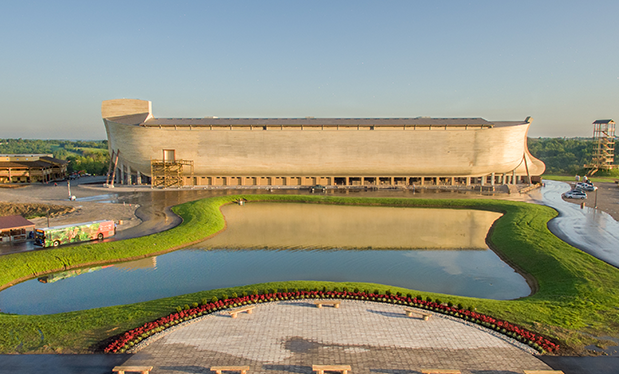In January, NRCA published The NRCA Roofing Manual: Metal Panel and SPF Roof Systems—2016, which provides up-to-date NRCA best practices applicable to the design and installation of metal panel and spray polyurethane foam (SPF) roof systems. This volume replaces The NRCA Roofing Manual: Metal Panel and SPF Roof Systems—2012 in The NRCA Roofing Manual series.
The current volumes in The NRCA Roofing Manual include The NRCA Roofing Manual: Steep-slope Roof Systems—2013; The NRCA Roofing Manual: Architectural Metal Flashing, Condensation and Air Leakage Control, and Reroofing—2014 (an update was issued in July); The NRCA Roofing Manual: Membrane Roof Systems—2015 (an update was issued in July); and The NRCA Roofing Manual: Metal Panel and SPF Roof Systems—2016.
This article addresses the Metal Panel Roof Systems section of The NRCA Roofing Manual: Metal Panel and SPF Roof Systems—2016. For a discussion about the updated SPF Roof Systems section, see "Spotlight on SPF," January issue.
Manual update process
NRCA's Manual Update Committee primarily is responsible for developing The NRCA Roofing Manual. This committee consisted of 10 roofing professionals as it began work on the 2016 manual in July 2014. The committee reviewed the Metal Panel Roof Systems section of The NRCA Roofing Manual: Metal Panel and SPF Roof Systems—2012, revised the existing content and developed new content during the course of two face-to-face meetings and numerous conference calls. Separately, a task force of subject matter experts worked to update the SPF Roof Systems section. By May 2015, the finished draft of the new manual had been approved by NRCA's Technical Operations and Executive committees and the production process began.
Revised TOC
Generally speaking, content in the Metal Panel Roof Systems section was expanded and reordered, and a substantial amount of information regarding reroofing with metal panel roof systems was added.
Roof system configurations were relocated to the beginning section, keeping with the content organization scheme introduced in The NRCA Roofing Manual: Membrane Roof Systems—2015. NRCA recognizes its manuals are used as reference manuals and are not read cover to cover. Roof system configurations in the front of the manual are intended to be easily referenced for roof system specifications using component-specific information located in the manual.
A summary and explanation of revisions in the manual follow.
Guide for designers
Roof system configurations in Chapter 1 are intended as guides for designers of metal panel roof assemblies for preparing project specifications. They also may be used as checklists for assembling submittal paperwork.
For each roof system configuration, checkboxes provide options for selecting from a variety of roof system component materials and installation methods. Specific options for metal roof panel seam and rib types are addressed as part of the updated configurations. Notes added to roof system configuration figures call attention to specifying panel width and panel clip or support spacing.
Chapter 1 includes re-cover metal panel roof system configurations that formerly were included in a chapter addressing roof system re-covering.
Extruded polystyrene rigid board insulation and polymeric powder coating metal panel finish were removed from the configurations as neither commonly are used for metal roof panel applications in the U.S.
Decks and spaced supports
Chapter 2—Structural Substrates addresses structural substrates for architectural and structural metal panel roof systems. According to NRCA, architectural metal roof panels require a continuous or closely spaced substrate and rely on slope to shed water; structural panels are designed to be applied over open framing and typically are weatherproof.
Section 2.1—Guidelines Applicable to All Structural Substrate Types incorporates the following revisions introduced in The NRCA Roofing Manual: Membrane Roof Systems—2015:
- A discussion of updated code provisions, including references to the International Building Code, 2015 Edition (IBC) and NFPA 70: National Electrical Code, 2014 Edition, and accompanying discussion of electrical conduits and other piping installed on top of or directly beneath roof decks
- Information about FM Global requirements for steel roof decks intended for installation of FM Approvals-rated roof systems and related information on grades of steel used to fabricate steel roof deck panels
- Information about Steel Deck Institute (SDI) guidelines for steel roof deck attachment contained in SDI's Design Manual for Composite Decks, Form Deck, and Roof Decks; SDI's Diaphragm Design Manual; and ANSI/SDI RD-2010, "Standard for Steel Roof Deck," which is referenced as a permitted steel roof deck design standard in IBC
Metals
Chapter 3—Guidelines Applicable to Metal has been reorganized. This chapter contains detailed information about roofing metals, including weather considerations, protective coatings, galvanic reaction of dissimilar metals and oil canning. Material-specific discussion of metals used in roofing now includes applicable metal thickness and weight tables as well as corrosive environment information alongside the information about metal properties, alloys and uses. There is a separate historical section about metals that no longer are used in metal roofing in North America but may be found in existing roof systems.
Revisions introduced in the Architectural Metal Flashing section of The NRCA Roofing Manual: Architectural Metal Flashing, Condensation and Air Leakage Control, and Reroofing—2014 have been included in the corresponding sections of the 2016 manual. For example, recommendations addressing weather and corrosive environmental effects on roofing metals and expanded discussion of galvanic corrosion have been aligned with the 2014 manual.
The new Section 3.5—Joinery addresses methods of joining sheet metal. These methods include mechanical fasteners, crimping and locking as well as metal-specific joinery options such as soldering and welding.
General guidelines
Chapter 4—Guidelines Applicable to All Metal Panel Roof Systems addresses design considerations common to all types of metal panel roof systems such as seam types and seaming methods, metal panel layout and attachment, manufacturing methods and accommodating thermal movement in service. The updated chapter now addresses cleats, clips and drip edge metal. This content was relocated from the chapter discussing guidelines applicable to metal.
Updated discussion of metal panel manufacturing methods addresses fabrication and installation quality of plant- and site-formed metal roof panels.
New information was added about several standards referenced in the IBC that apply to metal panel roof systems.
Architectural panels
Chapter 5—Architectural Metal Panel Roof Systems specifically addresses water-shedding metal panel roof systems. This chapter received minor revisions. Among these, references to water and ice-dam protection membranes were replaced with references to self-adhering polymer-modified bitumen sheets complying with ASTM D1970, "Standard Specification for Self-Adhering Polymer Modified Bituminous Sheet Materials Used as Steep Roofing Underlayment for Ice Dam Protection." ASTM D1970 applies to self-sealing polymer-modified bitumen sheets designed to seal around fastener penetrations.
NRCA made the change to recognize the fact that self-adhering underlayment sheets not only are used for construction of water and ice-dam protection membranes along eaves in cold climates but also commonly are used for lining roof valleys, flashing penetrations and as underlayments for entire roof decks.
Section 5.4—Airspace Ventilation addresses design considerations related to condensation on the undersides of metal roof panels. Formerly, "Ventilation" was used as the heading for this section, but it was revised because the updated section is focused specifically on above-deck airspaces and not attic spaces that the term "ventilation" typically is applied to when used in a roofing context. Additional information regarding guidelines for attic space ventilation can be found in the Condensation and Air Leakage Control section of The NRCA Roofing Manual: Architectural Metal Flashing, Condensation and Air Leakage Control, and Reroofing.
An illustration of a valley gusset was added as part of architectural metal panel roof system valley modification discussion. A gusset installed at the mouth of a valley is intended to eliminate panel seams from this area. The gusset allows an ice dam to easily free itself from the valley.
Structural panels
Chapter 6—Structural Metal Panel Roof Assemblies addresses design and installation considerations for metal panel roof systems intended to span between spaced supports and be weatherproof roof systems. NRCA's Manual Update Committee added a new minimum slope recommendation: Where a structural metal panel roof assembly includes valleys, NRCA now recommends the panels be sloped to provide a minimum valley slope of 1/2 of an inch per foot.
The committee simplified the language addressing metal valley flashing material that is installed between a metal valley liner and metal valley flashing in structural metal panel roof assemblies over open purlins. An underlayment, such as an ASTM D1970-compliant self-adhering polymer-modified bitumen sheet, strongly is recommended. EPDM and heavy vinyl liner materials no longer are included as the recommended materials. NRCA has long recommended metal valley liners be installed for structural metal panel roof systems over open purlins to provide a continuous substrate for valley underlayment, support for panel ends, valley flashing metal, and installation and maintenance personnel. Heavier-gauge metal as compared with the panels should be used for the liner and increase as the valley width increases.
Fasteners
In Chapter 7—Fasteners, guidelines for selecting fastener materials for use with different cladding metals have been updated. The guidelines are based on galvanic action and summarized in a table. The updated table includes revised recommendations for several fastener-cladding pairings; details of several materials' descriptions have been revised.
Accessories
Chapter 8—Roof Accessories provides technical information about gutters and downspouts, snow guards, skylights, walkways and lightning protection accessories used with metal panel roof systems. A new figure with examples of snow-retention devices attached using nonpenetrating seam clamps and recommendations for pipe support systems based on the International Fuel and Gas Code, 2015 Edition provisions were added to this section.
Reroofing
Significant expansion occurred in Chapter 9—Reroofing. This chapter provides guidelines for metal panel roof system replacement and re-cover scenarios. The corresponding chapter of the 2012 manual only addressed re-cover considerations.
Previously, NRCA guidelines for roof system replacement were consolidated in the Reroofing section of The NRCA Roofing Manual: Architectural Metal Flashing, Condensation and Air Leakage Control, and Reroofing—2014 for all types of roof systems. With the 2015 volume and now this year's volume, generally applicable information and roof system type-specific replacement guidelines have been included.
The idea that determining whether re-covering or replacement is appropriate should follow a thorough evaluation of an existing roof assembly is central to how information is organized in Chapter 9. First, essential terms and concepts used in the chapter are explained. Then, guidelines for evaluating existing roof systems are presented separately for low- and steep-slope systems. Based on the existing roof system evaluation—and review of building code requirements for reroofing addressed in the following section—it may be determined the existing roof system is a good candidate for re-covering. For this case, another section in Chapter 9 provides guidelines specific to re-cover applications using metal roof panels.
If it is determined an existing roof system is not an adequate substrate for re-covering and tear-off is necessary, the reroofing chapter offers guidelines for evaluating different types of existing structural substrates to determine whether the substrate will accommodate a new roof system. If a new replacement metal panel roof system is to be installed, the Reroofing chapter offers a separate section for considerations specific to that scenario.
Construction details
In Chapter 10—Construction Details, 34 construction details designated "AM-" apply to architectural metal panels, 24 construction details designated "STM-" apply to structural trapezoidal seam metal panels and 25 construction details designated "SVM-" apply to structural vertical seam metal panels.
Minor revisions include the switching of primary and alternative details for a couple of conditions and corrections or redrawing of a few details for readability.
For instance, the bellows-type, preformed flashing is shown as the primary detail for flashing pipe penetrations in architectural metal panels and the shop-formed soldered or sealed sheet-metal flashing is the alternative detail. The primary detail depicts NRCA's preferred method of addressing a specific flashing condition; alternative details for the same condition depict methods also considered best practices by NRCA, subject to any limitations described on the alternative construction details.
Stay on top of changes
If you are involved with designing or installing metal panel roof systems, I encourage you to become familiar with the Metal Panel Roof Systems section of NRCA's 2016 roofing manual.
NRCA members receive free access to electronic versions of The NRCA Roofing Manual series. Members can download the manual as a PDF at shop.nrca.net and access it through the NRCA app. The app is available free from Google Play, the Apple App Store and the Windows Store.
Hard copies of all NRCA manuals are available for purchase at shop.nrca.net.
Maciek Rupar is an NRCA director of technical services.



